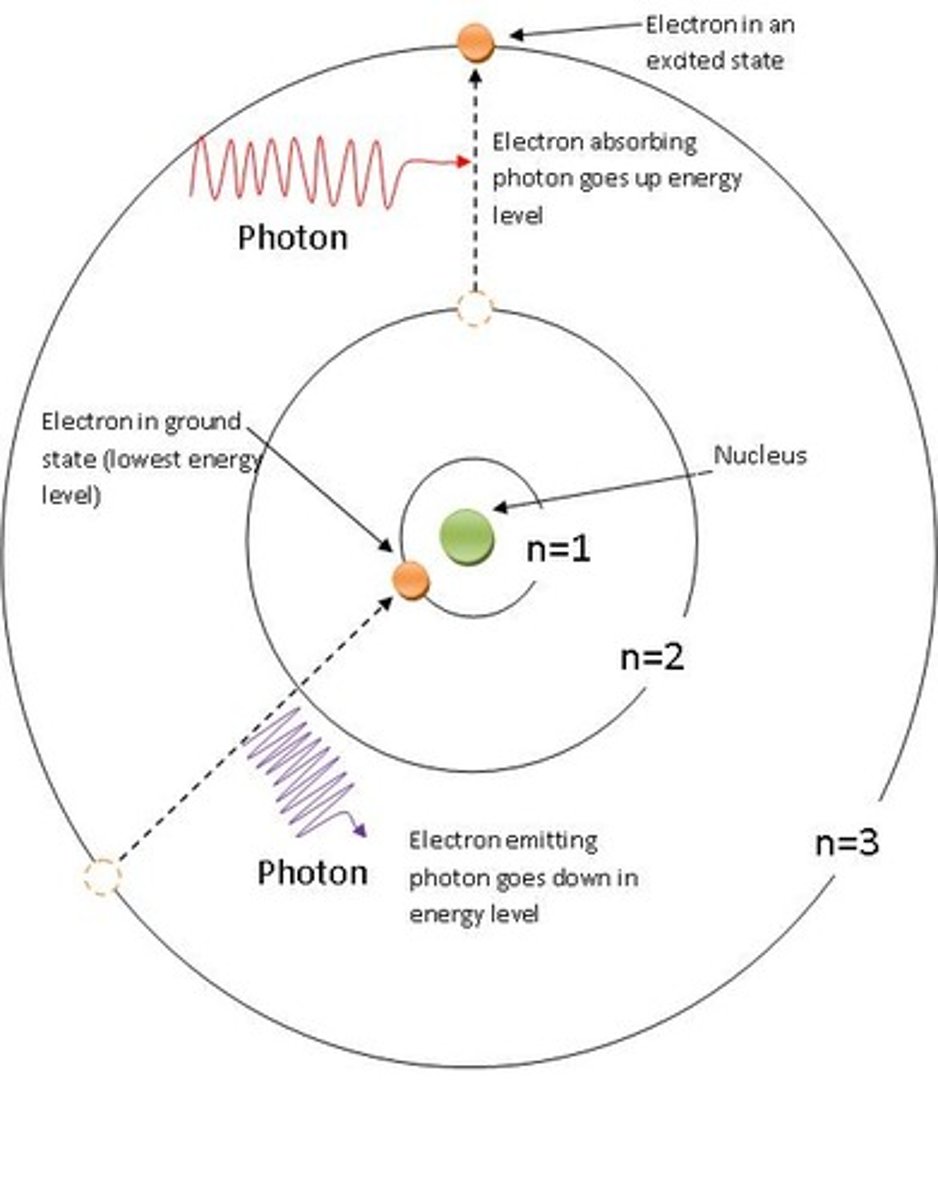History of Atom
1/16
There's no tags or description
Looks like no tags are added yet.
Name | Mastery | Learn | Test | Matching | Spaced |
|---|
No study sessions yet.
17 Terms
Atom
smallest part of an element that keeps the element's properties
Democritus
Greek philosopher that believed atoms were the smallest piece of matter
John Dalton
English chemist who developed the Atomic Theory
Aristotle
philosopher that stated all matter is composed of 4 elements - air, earth, water, and matter
Atomic theory
proposed by John Dalton
1. All elements are composed of atoms that are indivisible and indestructible (not true because protons, neutrons and electrons were discovered)
2. Atoms of the same element are exactly alike (not true because of isotopes)
3. Atoms of different elements are different.
4. Compounds are formed by the joining of atoms of 2 or more elements.
JJ Thomson
- scientist who discovered the electron (negatively charged subatomic particle) using a cathode ray tube
- developed plum pudding model
Plum Pudding model
-a model of the atom created by JJ Thomson
- consists of electrons on the surface of a positively charged sphere
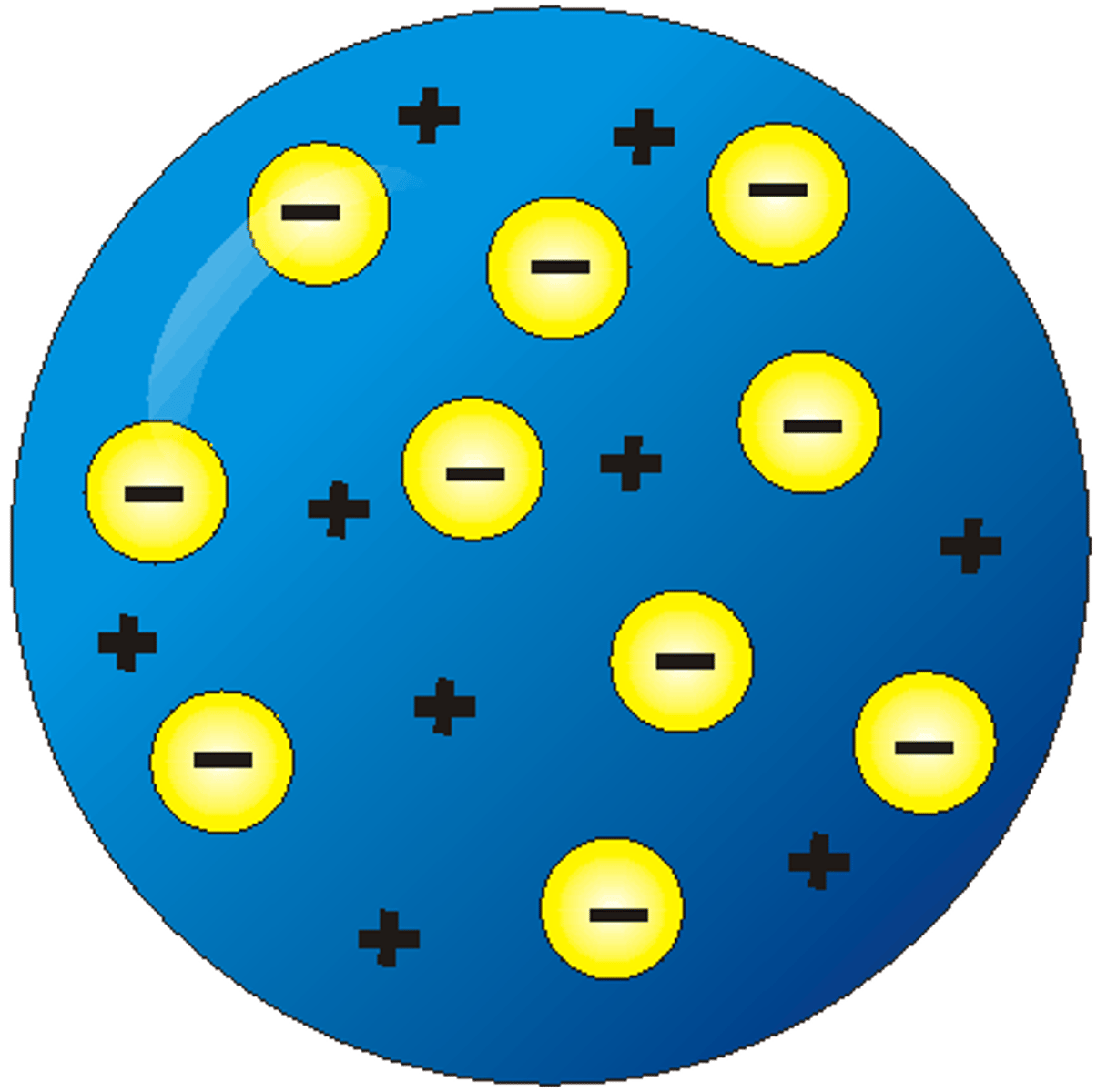
Robert Millikan
Scientist who devised the oil drop experiment which allowed the charge on the electrons to be calculated
Ernest Rutherford
discovered the nucleus by shooting alpha particles through a thin piece of gold foil
cathode tube experiment
experiment done by JJ Thomson in which he discovered the electron
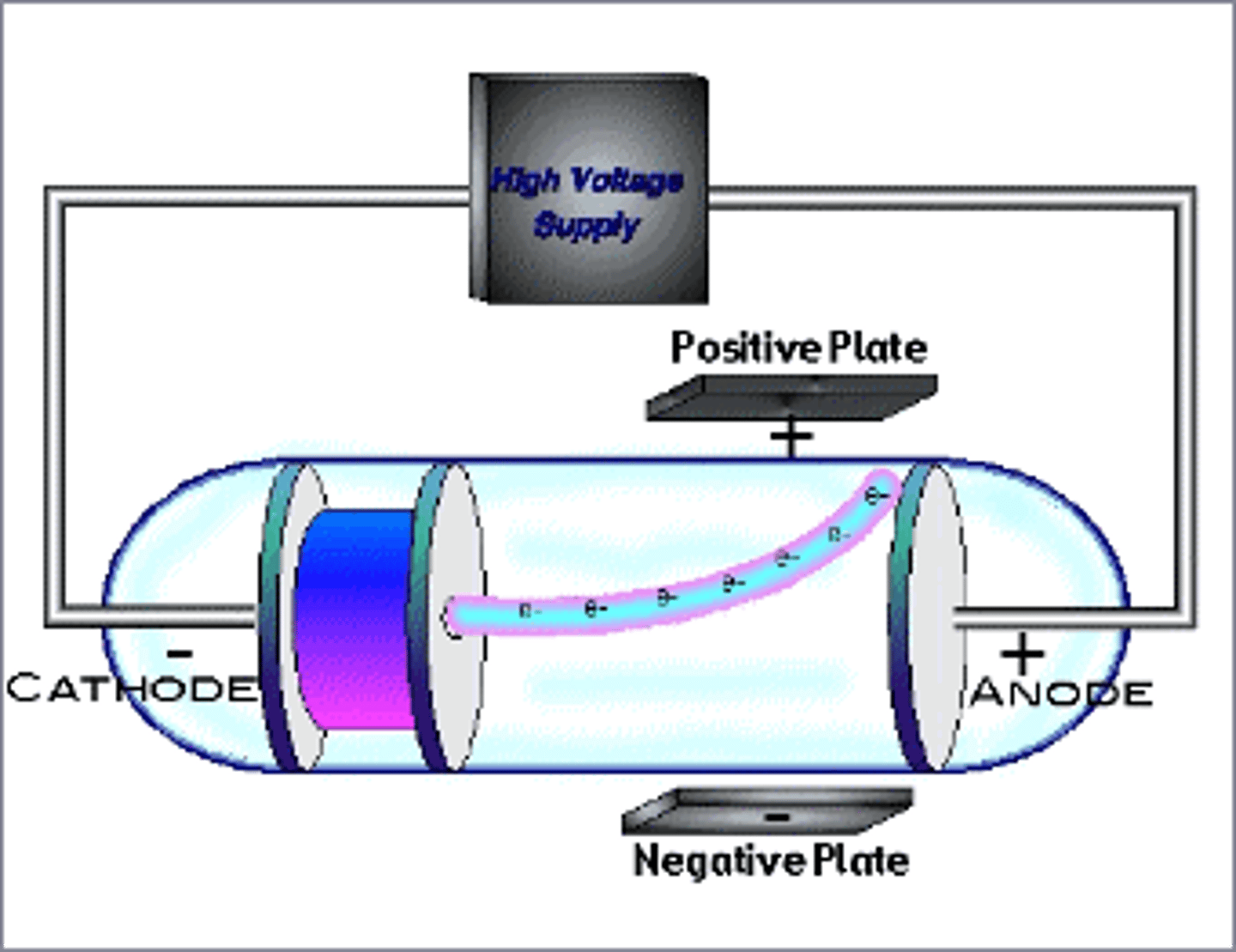
Gold foil experiment
an experiment performed by Rutherford that provided evidence that atoms are mostly empty space and have a dense, positive nucleus
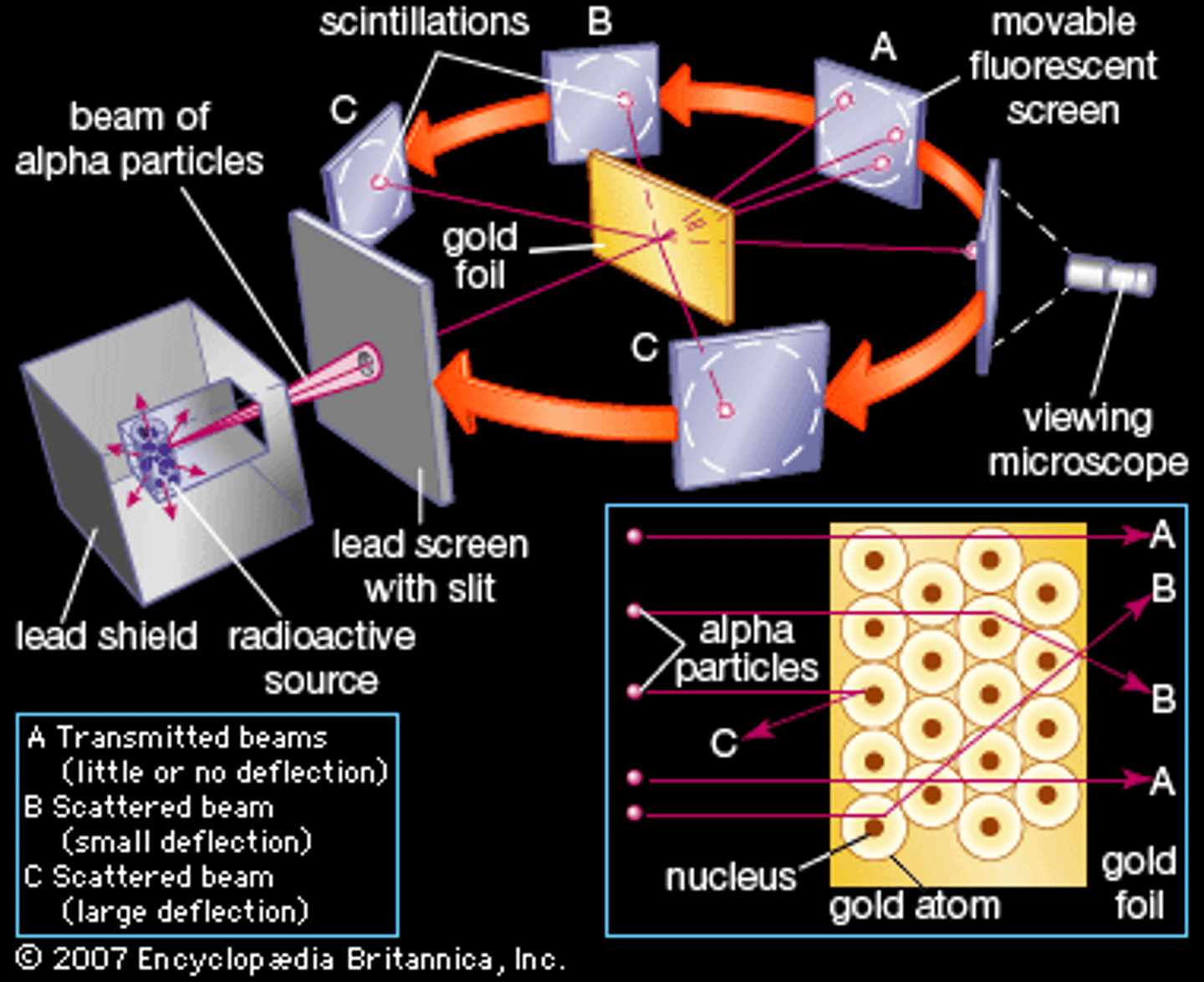
Niels Bohr
scientist proposed a model of atom based on energy levels (Each energy level has a different amount of energy; the farther away an electron is from the nucleus, the more energy it has)
James Chadwick
discovered the neutron
Mosely
determined the number of protons in atoms using x-ray diffraction
Bohr model
- model of atom where electrons move in definite paths (orbits) around the nucleus.
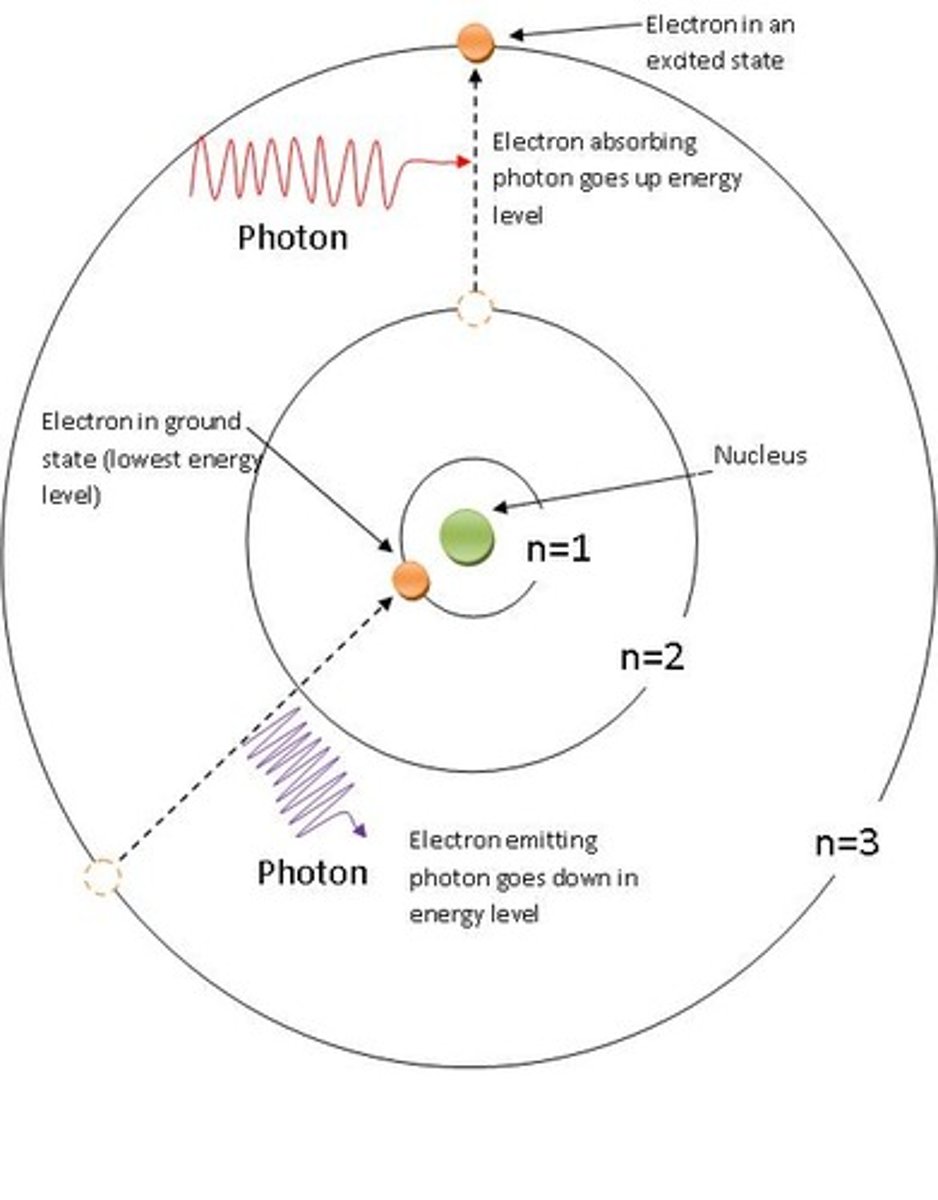
Modern Atomic Model
model proposed by Schrondinger that says there is 90% probability of finding an electron in a certain area around the nucleus.
light emission
released by electrons as they return to the ground state (lower energy level) from their excited state (higher energy level)
